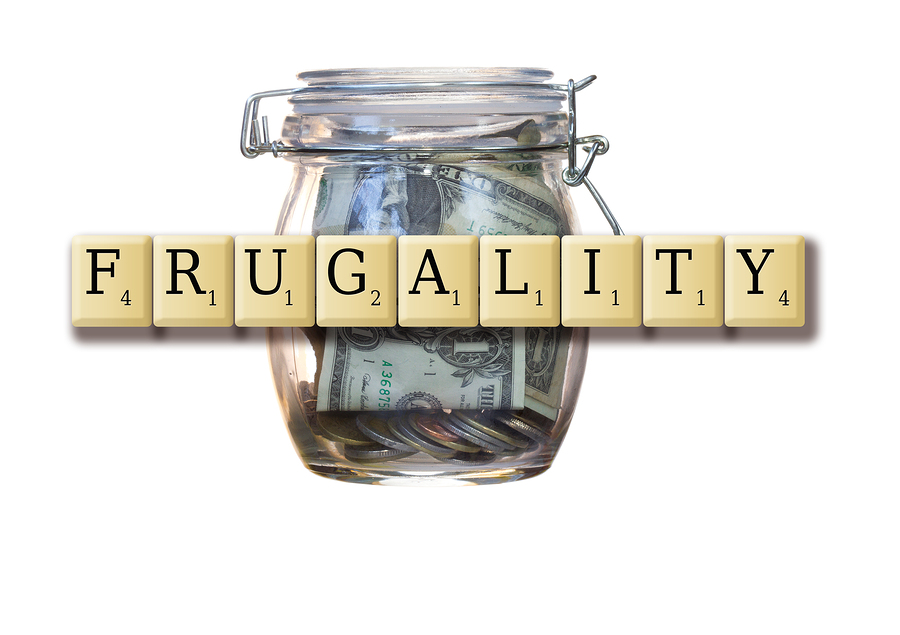Key Takeaways
-
FIRE stands for Financial Independence, Retire Early, focusing on aggressive saving and investing.
-
Calculate your FIRE number by determining your annual expenses and multiplying by 25.
-
Track your spending meticulously to identify areas where you can cut costs.
-
Boost your savings rate by living frugally and increasing your income.
-
Invest wisely in diversified portfolios to grow your wealth over time.
Financial Independence Retire Early (FIRE) Tips & Strategies
Understanding FIRE Principles
FIRE, which stands for Financial Independence, Retire Early, is a movement that encourages individuals to save and invest a large portion of their income so they can retire much earlier than the traditional retirement age. The core idea is to gain financial freedom, allowing you to spend your time doing what you love rather than what pays the bills.
To achieve FIRE, you must adopt a lifestyle of frugality, prioritize saving, and invest wisely. This means making conscious choices about your spending and focusing on growing your wealth through smart investments.
Steps to Achieve Financial Independence
Achieving financial independence requires a disciplined approach. Here are some actionable steps to get you started:
-
Set clear financial goals: Know exactly what you want to achieve and by when.
-
Create a budget: Track your income and expenses to identify savings opportunities.
-
Increase your income: Look for ways to earn more, such as side hustles or career advancement.
-
Reduce expenses: Cut unnecessary costs and live below your means.
-
Invest wisely: Put your money in diversified investments to grow your wealth.

Calculate Your Financial Independence Number
One of the most important steps in your FIRE journey is calculating your financial independence number. This number represents the amount of money you need to have saved and invested to live off your investments without needing to work. For more detailed strategies, check out Financial Independence Retire Early: Achieve FIRE With Expert Tips.
A common rule of thumb is to multiply your annual expenses by 25. This is based on the 4% rule, which suggests you can safely withdraw 4% of your investments annually without running out of money.
“If your annual expenses are $40,000, your FIRE number would be $1,000,000 ($40,000 x 25).”
Track Your Spending
Tracking your spending is crucial to achieving FIRE. By understanding where your money goes, you can identify areas to cut back and save more. Use tools like budgeting apps or spreadsheets to monitor your expenses.
Most importantly, review your spending regularly to ensure you’re staying on track. This will help you make informed decisions and adjust your budget as needed.
Boost Your Savings Rate
To achieve FIRE, you need to save a significant portion of your income. Aim to save at least 50% of your earnings, if not more. This might sound daunting, but there are several strategies to help you boost your savings rate:
-
Live frugally: Cut unnecessary expenses and focus on needs over wants.
-
Increase your income: Take on a side hustle, ask for a raise, or switch to a higher-paying job.
-
Automate savings: Set up automatic transfers to your savings and investment accounts.
Invest Wisely
Investing is a key component of the FIRE strategy. Your goal is to grow your wealth over time, so you can live off your investments. Here are some tips for investing wisely:
Consider exploring top apps to make money online to increase your income streams and boost your investment potential.
-
Diversify your portfolio: Spread your investments across different asset classes to reduce risk.
-
Invest in low-cost index funds: These funds offer broad market exposure with low fees.
-
Reinvest dividends: Use the power of compound interest to grow your wealth faster.
-
Stay the course: Stick to your investment plan and avoid making impulsive decisions based on market fluctuations.
Fat FIRE
Fat FIRE is a version of the FIRE movement for those who want to retire early but maintain a higher standard of living. Unlike Lean FIRE, which focuses on extreme frugality, Fat FIRE allows for more discretionary spending and a more comfortable lifestyle in retirement. For more ideas on how to increase your income, check out these top ten apps to make money online.
To achieve Fat FIRE, you will need to save and invest more than the typical FIRE participant. This often means aiming for a higher FIRE number, sometimes in the range of $2 million or more, depending on your desired lifestyle.
Investing wisely and maximizing your income are crucial for reaching Fat FIRE. Consider diversifying your investments and seeking opportunities for high returns, while still managing risk appropriately.
“Fat FIRE might involve saving enough to spend $100,000 or more annually in retirement.”
Barista FIRE
Barista FIRE is another variation of the FIRE movement. It involves reaching a level of financial independence where you can retire early but still work part-time to cover some of your expenses. This approach can be particularly appealing for those who enjoy their work but want more flexibility and less financial pressure.
By combining part-time work with your savings and investments, Barista FIRE allows you to retire earlier than traditional retirement but with the security of supplemental income. This can also help cover costs like health insurance, which can be a significant expense for early retirees.
Overcoming Common Challenges
Achieving FIRE is not without its challenges. Many people face obstacles such as frugality fatigue, healthcare costs, and maintaining motivation over the long term. Here are some strategies to overcome these common challenges: consider exploring top apps to make money online to boost your income and stay motivated.
First, it’s important to recognize that challenges are a normal part of the FIRE journey. By anticipating them and having a plan in place, you can stay on track and reach your goals. For additional guidance, check out these top ten apps to make money online.

Managing Frugality Fatigue
Frugality fatigue occurs when the constant focus on saving and cutting costs becomes exhausting. To manage this, allow yourself occasional small splurges to maintain balance and avoid burnout. Also, find low-cost or free activities that bring you joy and fulfillment.
Remember, the goal is not to deprive yourself but to make conscious spending choices that align with your long-term goals.
Healthcare Costs
Healthcare costs can be a significant concern for those pursuing FIRE, especially in countries without universal healthcare. It’s crucial to plan for these expenses by researching your options and setting aside funds specifically for medical costs.
Consider options like high-deductible health plans paired with Health Savings Accounts (HSAs) or exploring part-time work opportunities that offer health benefits.
Maintaining Motivation
Maintaining motivation over the long term can be challenging. To stay motivated, regularly review your progress and celebrate milestones along the way. Surround yourself with a supportive community, whether online or in person, to share experiences and encouragement. For additional resources, consider exploring top apps to make money online which can provide extra motivation and financial support.
Additionally, keep your “why” in mind—the reason you’re pursuing FIRE. Whether it’s more time with family, pursuing a passion, or simply having financial freedom, keeping your end goal in sight can help you stay focused and motivated.
Success Stories and Real-life Examples
Hearing about others’ success can be incredibly motivating. Here are two real-life examples of people who have successfully achieved FIRE:
Case Study 1: Early Retiree in Their 30s
Jane, a software engineer, started her FIRE journey at 25. By living frugally, saving 70% of her income, and investing in index funds, she was able to retire at 35. Now, Jane spends her time traveling and working on passion projects.
Case Study 2: Family Achieving FIRE
The Smith family, with two children, decided to pursue FIRE together. They downsized their home, cut unnecessary expenses, and focused on increasing their income through side hustles. After 10 years of disciplined saving and investing, they reached financial independence and now enjoy more family time and flexibility.
Additional Resources to Accelerate Your FIRE Journey
There are many resources available to help you on your FIRE journey. Here are some recommended books, blogs, and podcasts:
-
Books: “Your Money or Your Life” by Vicki Robin, “The Simple Path to Wealth” by JL Collins
-
Blogs: Mr. Money Mustache, The Mad Fientist
-
Podcasts: ChooseFI, BiggerPockets Money Podcast
Additionally, watching videos can provide valuable insights and inspiration. Check out this comprehensive guide on achieving FIRE on YouTube: Watch Now. For more information on the FIRE Movement, explore this detailed article.
Books and Blogs
Books and blogs can be invaluable resources on your FIRE journey. They offer a wealth of knowledge, strategies, and personal experiences that can guide you. Some highly recommended books include “Your Money or Your Life” by Vicki Robin and “The Simple Path to Wealth” by JL Collins. These books provide practical advice on budgeting, saving, and investing.
Blogs are another great way to stay informed and motivated. Mr. Money Mustache and The Mad Fientist are two popular blogs that cover a wide range of topics related to FIRE. They offer insights on frugality, investing, and the psychological aspects of pursuing financial independence.

Podcasts and YouTube Channels
Podcasts and YouTube channels are excellent for learning on the go. They feature interviews with experts, success stories, and in-depth discussions on various aspects of FIRE. One highly recommended podcast is ChooseFI, which covers everything from budgeting tips to investment strategies. Another great option is the BiggerPockets Money Podcast, which focuses on real estate investing as a path to financial independence.
YouTube channels can also provide visual and engaging content. For a comprehensive guide on achieving FIRE, check out this video: Watch Now. It offers valuable insights and actionable tips to help you on your journey.
Final Thoughts on Achieving FIRE
Achieving financial independence and retiring early is a challenging but rewarding journey. It requires discipline, strategic planning, and a willingness to make sacrifices in the short term for long-term gains. By following the tips and strategies outlined in this article, you can set yourself on the path to financial freedom.
Summary of Key Points
To summarize, here are the key points to remember:
-
Calculate your financial independence number by multiplying your annual expenses by 25.
-
Track your spending to identify areas where you can cut costs.
-
Boost your savings rate by living frugally and increasing your income.
-
Invest wisely in a diversified portfolio to grow your wealth over time.
-
Consider different versions of FIRE, such as Lean FIRE, Fat FIRE, and Barista FIRE, to find the approach that best suits your lifestyle and goals.
Call to Action: Get Started on Your FIRE Journey
Now that you have a solid understanding of the FIRE movement, it’s time to take action and start planning your path to financial independence.
Books and Blogs
Books and blogs can be invaluable resources on your FIRE journey. They offer a wealth of knowledge, strategies, and personal experiences that can guide you. Some highly recommended books include “Your Money or Your Life” by Vicki Robin and “The Simple Path to Wealth” by JL Collins. These books provide practical advice on budgeting, saving, and investing.
Blogs are another great way to stay informed and motivated. Mr. Money Mustache and The Mad Fientist are two popular blogs that cover a wide range of topics related to FIRE. They offer insights on frugality, investing, and the psychological aspects of pursuing financial independence.
Podcasts and YouTube Channels
Podcasts and YouTube channels are excellent for learning on the go. They feature interviews with experts, success stories, and in-depth discussions on various aspects of FIRE. One highly recommended podcast is ChooseFI, which covers everything from budgeting tips to investment strategies. Another great option is the BiggerPockets Money Podcast, which focuses on real estate investing as a path to financial independence.
Final Thoughts on Achieving FIRE
Achieving financial independence and retiring early is a challenging but rewarding journey. It requires discipline, strategic planning, and a willingness to make sacrifices in the short term for long-term gains. By following the tips and strategies outlined in this article, you can set yourself on the path to financial freedom.
Summary of Key Points
To summarize, here are the key points to remember:
-
Calculate your financial independence number by multiplying your annual expenses by 25.
-
Track your spending to identify areas where you can cut costs.
-
Boost your savings rate by living frugally and increasing your income.
-
Invest wisely in a diversified portfolio to grow your wealth over time.
-
Consider different versions of FIRE, such as Lean FIRE, Fat FIRE, and Barista FIRE, to find the approach that best suits your lifestyle and goals.
Call to Action: Get Started on Your FIRE Journey
Now that you have a solid understanding of the FIRE principles and strategies, it’s time to take action. Start by setting clear financial goals and creating a detailed budget. Track your spending and find ways to cut costs and increase your income. Invest wisely and stay committed to your plan.
Remember, the journey to financial independence and early retirement is a marathon, not a sprint. Stay motivated, stay disciplined, and most importantly, stay focused on your long-term goals. For more inspiration and practical tips, don’t forget to Watch Now and kickstart your FIRE journey today.
Frequently Asked Questions (FAQs)
Many people have questions about the FIRE movement and how to achieve financial independence. Here are some of the most frequently asked questions:
-
What is the 4% Rule?
-
How much should I save to achieve FIRE?
-
Is FIRE realistic for everyone?
-
What expenses should I cut down first?
What is the 4% Rule?
The 4% rule is a guideline for determining how much money you can safely withdraw from your retirement savings each year without running out of money. It suggests that you can withdraw 4% of your total investment portfolio annually. This rule is based on historical data and assumes that your investments will continue to grow over time, even with the withdrawals.
For example, if you have $1,000,000 saved, you can withdraw $40,000 per year (4% of $1,000,000) to cover your living expenses. This rule helps ensure that your savings will last throughout your retirement.

How Much Should I Save to Achieve FIRE?
To determine how much you need to save to achieve FIRE, calculate your annual expenses and multiply that amount by 25. This calculation gives you your FIRE number, which represents the total amount of money you need to have saved and invested to retire early.
For example, if your annual expenses are $50,000, your FIRE number would be $1,250,000 ($50,000 x 25). This amount should be sufficient to support your lifestyle based on the 4% rule.
Is FIRE Realistic for Everyone?
“While FIRE is an achievable goal for many, it may not be realistic for everyone. It requires a high level of discipline, frugality, and a willingness to make significant lifestyle changes.”
However, even if you don’t achieve full financial independence, adopting FIRE principles can still improve your financial situation and provide greater flexibility and security. The key is to find a balance that works for you and aligns with your values and priorities.
What Expenses Should I Cut Down First?
To maximize your savings rate, start by cutting down on discretionary expenses. These are non-essential costs that you can reduce or eliminate without significantly impacting your quality of life. Examples include dining out, entertainment, and subscription services.
Next, look for ways to reduce fixed expenses, such as housing and transportation costs. Consider downsizing your home, refinancing your mortgage, or using public transportation instead of owning a car.
Finally, focus on reducing variable expenses, such as groceries and utility bills. Use coupons, buy in bulk, and implement energy-saving measures to lower your costs.

